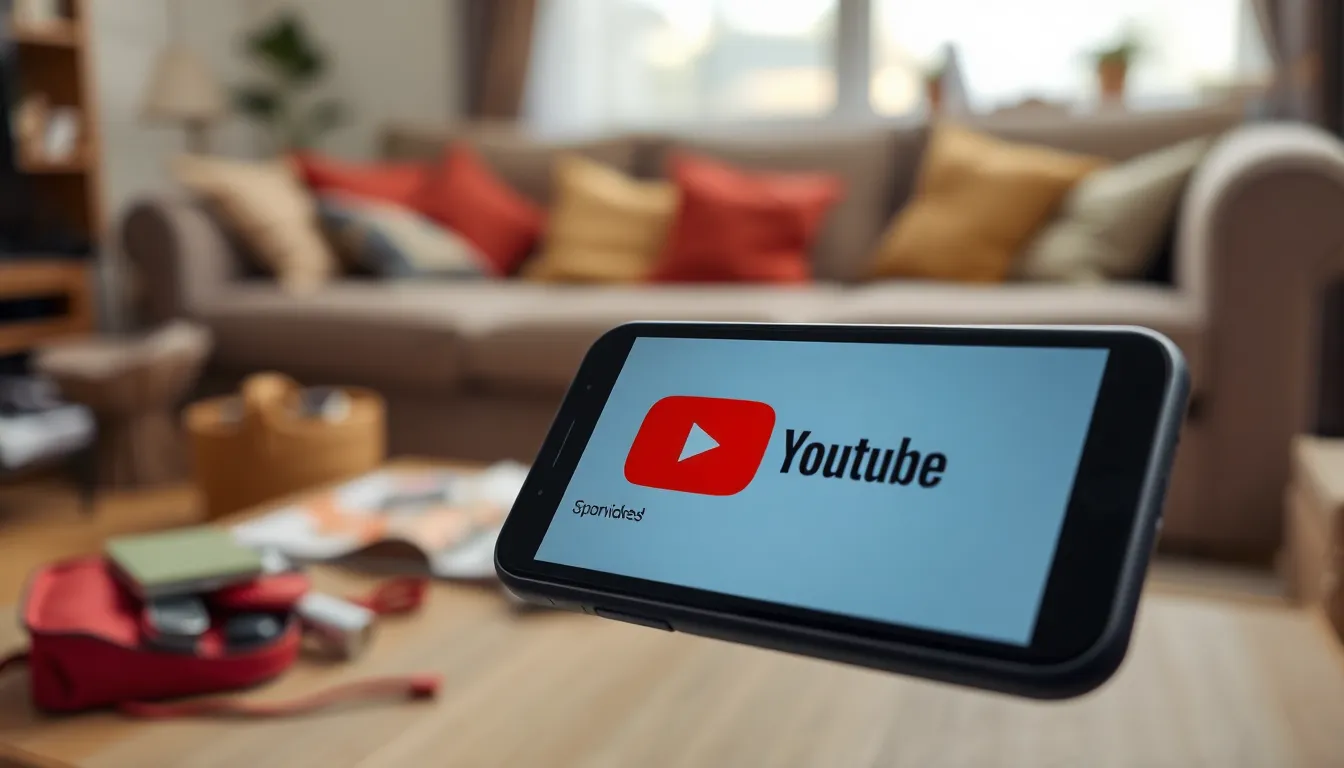Table of Contents
ToggleYouTube has become a go-to source for entertainment, education, and everything in between. But as users scroll through endless videos, they often find their iPhone storage dwindling faster than their willpower to resist cute cat clips. Why does this happen? It turns out, that little app is a storage monster lurking in the shadows of your device.
Every time a user watches a video, YouTube saves bits and pieces to ensure smooth playback. While this sounds great in theory, it can lead to a storage crisis that leaves users wondering if they need to sacrifice their favorite apps or delete that 200-photo-long vacation album. Understanding why YouTube gobbles up so much space can help users regain control and keep their iPhones running smoothly.
Understanding YouTube Storage Usage
YouTube’s storage usage primarily depends on cached files and downloaded content. The app saves video data to ensure smooth playback, which consumes space on the iPhone. Cached files can include thumbnails, video previews, and offline viewing data. As users view more content, the cached data increases, consuming a significant portion of available storage.
Clearing the cache regularly helps optimize storage. This action removes unnecessary files and can free up valuable space. Notifications prompt users when storage reaches a critical level, but proactive management often prevents issues.
Downloaded videos also contribute to storage usage. Users who download videos for offline viewing face increased storage demands. Each downloaded video can range from hundreds of megabytes to several gigabytes, depending on quality settings.
In addition to video data, YouTube retains user settings and preferences. Saving data like watch history and playlists contributes to overall space consumption. Frequently updating the app can lead to additional storage requirements, as app updates often bring new features and optimizations.
Understanding how YouTube utilizes storage enables informed decisions. Awareness of cached files, downloaded content, and app updates plays a crucial role. Regularly auditing storage helps maintain device performance while ensuring a seamless YouTube experience.
Common Reasons for High Storage Consumption

YouTube’s significant storage consumption often stems from cached data and downloaded content. Understanding these factors helps manage device space efficiently.
Cached Data and Temporary Files
Cached data accumulates as users engage with videos. Thumbnails and metadata from watched content get stored on the iPhone. These files enhance viewing speed and user experience but also contribute to high storage use. Temporary files can take up substantial space over time,especially if users frequently watch new content. Regularly clearing the cache can free up valuable storage, allowing for better device performance.
Downloaded Content and Offline Viewing
Downloading videos for offline viewing leads to high storage consumption, depending on the quality selected. Higher quality settings, such as 1080p or 4K, occupy more space. Users might opt to download multiple videos, compounding this issue. Keeping track of downloaded content helps prevent unnecessary storage consumption. Regular audits of downloaded videos can ensure that users retain only necessary content while maximizing available storage.
Managing YouTube Storage on iPhone
YouTube users can effectively manage storage on their iPhones by following a few simple steps. Controlling the amount of space the app consumes ensures optimal device performance.
Clearing Cache and Data
Clearing cache and data can significantly reduce YouTube’s storage footprint. Users can navigate to the app settings on their iPhones, select YouTube, and tap on “Clear Cache” to remove unwanted files. Cached files accumulate over time and include thumbnails and temporary data from watched videos. Regularly clearing this cache prevents unnecessary storage use. Additionally, users can delete data associated with specific videos that are not needed anymore. Streamlining these files helps free up space, allowing for a smoother user experience and ensuring that important apps have sufficient storage.
Adjusting Download Settings
Adjusting download settings allows users to control how much storage YouTube occupies. Within the app, users can access their settings and select download quality options. Selecting lower quality settings, such as 480p instead of 1080p, conserves space without sacrificing viewing quality for many videos. Furthermore, users can set up automatic deletion for older downloads that no longer need to be saved. Regularly reviewing downloaded content ensures that only relevant videos remain, freeing up precious storage. Taking these measures allows users to fully enjoy YouTube while managing their iPhone’s storage effectively.
Alternatives to Reduce Storage Impact
Managing YouTube’s storage impact on an iPhone can involve several practical alternatives. These strategies help users minimize app footprint while still enjoying content.
Third-Party Apps
Consider using third-party apps designed for video streaming. Platforms like Vimeo or Dailymotion offer similar features with potentially lower storage demands. Users can also explore apps that allow video downloads without excessive cache buildup. These options may offer additional benefits like customizable quality settings that save space. Choosing less resource-intensive apps can lead to a smoother experience without sacrificing video quality.
Using Web Browser Instead
Accessing YouTube through a web browser provides a leaner alternative to the app. Browsers generally require less storage since they don’t store as much cached data. Users can enjoy video streaming directly without accumulating hefty downloads. This method allows for a temporary viewing experience while avoiding unnecessary storage consumption. Utilizing Safari or Chrome for watching videos can keep an iPhone’s storage capacity in check, leading to better overall device performance.
YouTube’s storage consumption on iPhones can be a challenge for users who want to maintain optimal device performance. By understanding the factors contributing to this issue users can take proactive steps to manage their storage effectively. Regularly clearing cache and adjusting download settings can significantly reduce the app’s footprint.
Exploring alternatives like third-party apps or using a web browser for streaming can also help alleviate storage concerns. Staying mindful of downloaded content and making adjustments will ensure a smoother viewing experience while keeping storage issues at bay. With these strategies in place users can enjoy YouTube without compromising their device’s performance.




